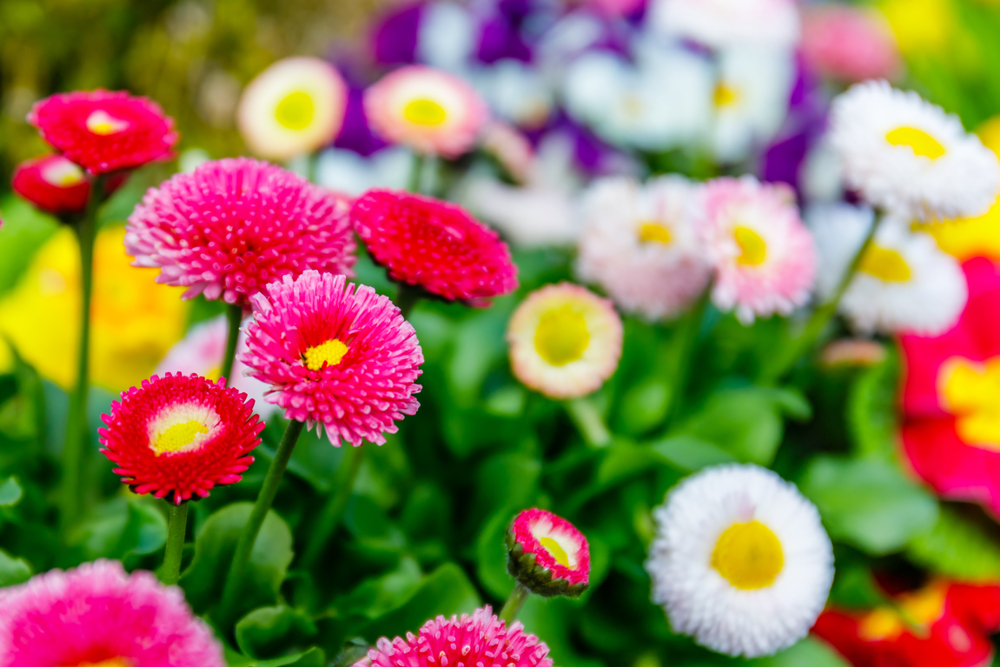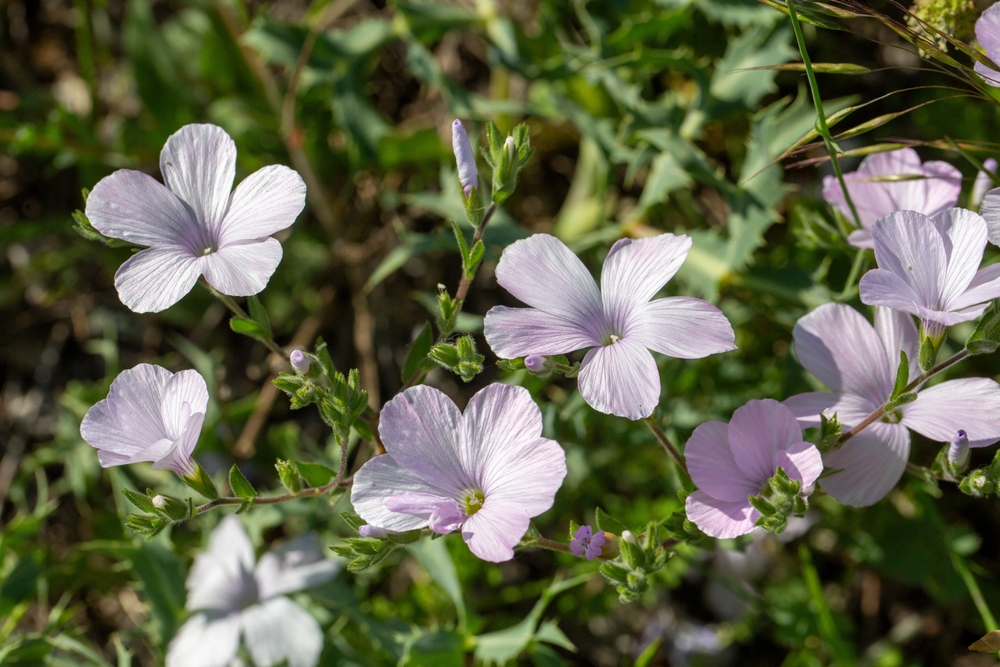
Image Source: Shutterstock.com
There’s something undeniably magical about fall gardens—the crisp air, the warm colors, and those bursts of late-season blooms that make your yard feel alive just before winter hits. But here’s the truth: buying perennials in autumn can get expensive if you’re not strategic. Nurseries are tempting, and it’s all too easy to walk out with a car full of plants and an empty wallet.
The good news? With a little timing, insider know-how, and patience, you can fill your garden with hardy perennials without draining your savings. Let’s dive into how to save big while your neighbors overspend.
Shop Late in the Season
Timing is everything when it comes to buying perennials. Early fall prices tend to stay high, but once the leaves start turning and the nurseries prepare for winter closures, that’s your golden hour. Late-season clearance events often slash prices by 50% or more, especially on plants that look a little scraggly after a long summer. Don’t be fooled by those faded leaves—many perennials are just going dormant and will bounce back beautifully next spring. Smart gardeners know that a “sad looking” plant at a discount is often a powerhouse in disguise.
Choose Perennials Over Annuals
It might sound obvious, but it’s worth repeating: perennials are the best long-term investment for your garden. Unlike annuals, which die off after one season, perennials return year after year, getting bigger and better each time. That means every dollar you spend goes further, saving you money season after season. Think of it as planting future savings along with your flowers. By focusing your fall shopping on hardy, zone-appropriate perennials, you’ll build a garden that practically pays you back in blooms.
Split and Swap with Fellow Gardeners
One of the cheapest (and most satisfying) ways to expand your garden is by dividing and trading plants with friends or neighbors. Fall is the perfect time to split established perennials like hostas, daylilies, and coneflowers, which tend to grow overcrowded after a few seasons. Not only does dividing rejuvenate the plants, but it also gives you more greenery for free. Set up a weekend “plant swap” with other garden enthusiasts—you’ll walk away with new varieties without spending a dime. Plus, it’s a fun excuse to talk dirt (literally) with people who share your green thumb.
Hit Local Sales and Farmers’ Markets
Big-box stores may offer convenience, but local nurseries and farmers’ markets often have the best end-of-season deals. Growers hate the idea of overwintering inventory, so they’ll price plants to move quickly once temperatures dip. You’ll also find perennials that are better suited to your local climate and soil, which means higher survival rates and fewer wasted purchases. Don’t be afraid to haggle a little if you’re buying in bulk—many vendors are happy to negotiate late in the season. The combination of local quality and lower prices makes these spots a fall gardener’s paradise.
Look for Native Plants
Native perennials are nature’s budget-friendly gems. Because they’re adapted to your region, they require less maintenance, less water, and fewer costly fertilizers or pesticides. Once they’re established, they thrive with minimal help—saving you both money and effort. You’ll find that native plants often multiply naturally over the years, filling in your garden without you spending another cent. If you’re serious about saving money while supporting pollinators and biodiversity, native species are the way to go.

Image Source: Shutterstock.com
Don’t Fear the Clearance Rack
Yes, those clearance racks full of sad-looking perennials can be a treasure trove if you know what to look for. Most of the time, these plants aren’t dying—they’re just out of season or temporarily stressed. Check for healthy roots, even if the top growth looks rough; as long as the root system is firm and white, the plant is likely to recover. Give them a little love—a trim, a drink of water, and good soil—and you’ll be amazed at how they bounce back. Some of the best gardens are built from “rescue plants” that cost a fraction of retail price.
Plant Smart and Plan Ahead
Fall planting isn’t just about buying—it’s about strategy. You’ll save more money if you plan your garden layout before you shop, so you know exactly what you need and how much space you have. Impulse buying leads to overcrowding, and overcrowding leads to wasted plants and wasted money. Focus on filling gaps and adding structure with perennials that complement what you already have. By planning ahead, you’ll avoid duplicates and ensure every plant earns its place in your garden.
Consider Bare-Root and Online Options
If you’re willing to plan ahead, ordering bare-root perennials online can be a major money-saver. These plants are shipped dormant, without soil, which makes them cheaper and easier to transport. Fall is a great time to place orders for spring delivery, locking in lower prices before demand spikes. Just be sure to buy from reputable sellers and check growing zones carefully. Bare-root planting takes a little patience, but the payoff in both price and variety is hard to beat.
Compost and Mulch to Protect Your Investment
Once you’ve planted your fall perennials, the last thing you want is to lose them to frost or neglect. A thick layer of mulch and a healthy dose of compost can make all the difference in protecting your plants through the winter. Mulch retains moisture, regulates temperature, and keeps weeds in check—saving you future maintenance costs. Compost, meanwhile, gives your perennials the nutrients they need to establish strong roots before the freeze. Think of it as insurance for your garden’s future, and it’s a small investment that yields big returns.
Get Creative with Containers and Recycled Materials
Who says you have to buy brand-new pots or fancy planters? You can save money—and add personality—by reusing materials around your home. Old buckets, crates, or even broken wheelbarrows can make charming homes for perennials. Just make sure there’s proper drainage, and you’re good to go. Gardening on a budget doesn’t mean sacrificing style—it means thinking outside the box (literally) and turning your creativity into savings.
A Budget Garden That Blooms Every Year
Building a beautiful fall garden doesn’t have to drain your bank account—it just takes smart timing, creativity, and a willingness to see potential in the unexpected. From shopping late in the season to swapping with friends, the best gardeners know how to stretch every dollar while growing something extraordinary. Perennials are an investment that pays you back year after year, turning one season’s work into a lasting landscape.
Now it’s your turn—what are your best tips for saving money on fall plants? Share your ideas, successes, or gardening adventures in the comments below.
You May Also Like…
Why You Should Never Skip Cleaning Garden Tools in Autumn
How to Spot Overcrowding in Perennial Beds
5 Perennials You Should Never Cut Back Now
Why You Should Rethink Fall Fertilizer Applications
10 Shade-Tolerant Crops for Shorter Fall Days
Leave a Reply